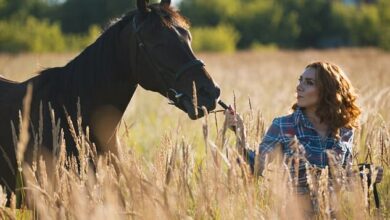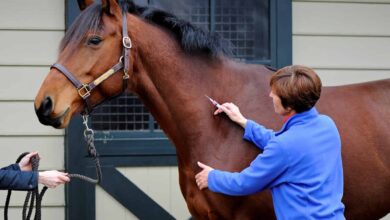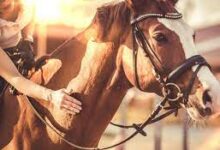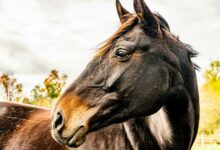by Ahmed Yousef,
Show jumping is one of the most exciting and thrilling equestrian sports, combining speed, strength, and precision. Success in this sport requires significant skill from both the rider and the horse. This article aims to highlight the rules of show jumping and provide essential tips to help you achieve victory in modern competitions.
Show Jumping Rules
Show jumping is a sport that involves clearing obstacles set along a specific course, with as few faults as possible and in the fastest time. The main rules are as follows:
- Clear Rounds: The rider and horse must clear all obstacles without knocking them down. If an obstacle is knocked down, penalty points are awarded to the rider.
- Time Limit: The rider must complete the course within the allotted time. If the rider exceeds the given time, additional penalty points are awarded.
- Number of Attempts: The rider must maintain balance and clear the obstacles on the first attempt. If the horse refuses or stops, penalty points are given, and repeated refusals can lead to disqualification.
- Correct Sequence: The rider must follow the correct sequence of obstacles as specified by the course layout. Any incorrect jump may lead to disqualification.
Tips for Winning in Modern Competitions
- Coordination Between Rider and Horse: Coordination between the rider and horse is fundamental in show jumping. The rider must develop a communication system with the horse, including verbal and physical cues, to ensure the horse responds correctly.
- Consistent Training: Regular training is key to success. The rider and horse should train on different types of obstacles and courses, which helps build confidence and improve performance.
- Proper Warm-Up: Before any competition, a proper warm-up for both the rider and horse is essential. Warming up helps prepare the muscles and stimulates the horse to focus and respond to commands.
- Course Planning: It is important to study the course carefully before the start of the competition. The rider should be aware of the placement of the obstacles and how to move between them with minimal effort and maximum accuracy.
- Speed Control: Speed is a crucial factor in show jumping, but controlling speed is equally important. The rider must know when to accelerate and when to slow down to maintain balance and successfully clear the obstacles.
- Building Self-Confidence: Confidence plays a major role in achieving victory. The rider should have confidence in their abilities and their horse’s ability to clear the obstacles and avoid hesitation, which can negatively affect performance.
- Breathing and Relaxation: Proper breathing and relaxation during jumps are important for helping the rider maintain balance and control over the horse. Tension and anxiety can negatively impact performance.
- Choosing the Right Horse: Choosing the right horse is just as important as training. The horse must have the strength, agility, and courage needed to clear the obstacles. There should also be harmony between the rider and the horse.
- Attention to Nutrition and Care: Proper nutrition and veterinary care for the horse contribute significantly to improving performance in competitions. Ensuring the horse receives a balanced and sufficient diet, as well as regular health check-ups, is essential.
- Learning from Mistakes: After each competition, the rider should analyze their performance and identify mistakes made. Learning from mistakes helps improve performance and avoid repeating the same errors in the future.
Mental and Physical Preparation
The mental and physical preparation of both the rider and the horse is just as important as practical training. The rider must be in a stable mental state, avoid stress, and maintain physical fitness to handle the demands of the course. The horse should also be well-prepared to perform at its best during the competition.
Show jumping is a sport that requires skill and high coordination between the rider and the horse, as well as focus and discipline. By following the basic rules, maintaining good training, and preparing mentally and physically, the rider can increase their chances of winning in modern competitions. Success in this sport depends on teamwork between the rider and the horse and dedication to training.








